| Adzhigirey, Viktor
126 Windemere St.
Springfield, MA 01104
Chapter: 7
Filing Date: 06/11/09 Allyn, William D.
2 Hawthorne Lane
Holyoke, MA 01040
Chapter: 13
Filing Date: 06/14/09 Al’s All Natural Ice Cream
Alvin’s All-Natural Ice Cream
Woods, Alvin J.
169 Bristol St.
Springfield, MA 01109
Chapter: 7
Filing Date: 06/19/09 Altman, Melvyn W.
P.O. Box 5395
Springfield, MA 01101
Chapter: 7
Filing Date: 06/10/09 Aronowitz, Donna L.
PO Box 287
Huntington, MA 01050
Chapter: 7
Filing Date: 06/04/09 Bazelak, Annette A.
93 Better Way
Springfield, MA 01119
Chapter: 7
Filing Date: 05/29/09 Belyshev, Vladimir
Belyshev, Irina
49 Dakota Dr.
Chicopee, MA 01013
Chapter: 7
Filing Date: 06/08/09 Berkshire Building Contractors
Abderhalden, Christopher M.
123 New Lenox Road
Lenox, MA 01240
Chapter: 7
Filing Date: 06/11/09 Berkshire Second Home Construction
Vandervoort, Walter J.
45 Stockbridge Road
Box 225
West Stockbridge, MA 01266
Chapter: 7
Filing Date: 06/03/09 Binczewski, Stefanie L.
166 North Main St.
South Hadley, MA 01075
Chapter: 7
Filing Date: 06/03/09 Blasque, Frances
195 Main St. #2b
Northampton, MA 01060
Chapter: 7
Filing Date: 06/18/09 Burke, Patrick T.
Burke, Doreen P.
67 Castle St.
Springfield, MA 01118
Chapter: 7
Filing Date: 06/18/09 Caloon, Peter M.
5 Chestnut Lane
Turners Falls, MA 01376
Chapter: 7
Filing Date: 06/18/09 Camilleri, Richard
14 Upland Road
Holyoke, MA 01040
Chapter: 13
Filing Date: 06/01/09 Carmody, Paul E.
388 Carew St.
Springfield, MA 01104
Chapter: 7
Filing Date: 06/18/09 Carter, Jean C.
49 Meadowbrook Manor
Agawam, MA 01001
Chapter: 7
Filing Date: 06/18/09 Champagne, Michael L.
Champagne, Bridget D.
44 Brigham Road
South Hadley, MA 01075
Chapter: 7
Filing Date: 06/11/09 Chaplin, Tina L.
858 Silver Lake St.
Athol, MA 01331
Chapter: 7
Filing Date: 06/13/09 Collins, Brad Garett
1038 North St. Ext.
Feeding Hills, MA 01030
Chapter: 13
Filing Date: 06/05/09 Comi, Ronald J.
Comi, Chrissy A.
334 East St.
Ludlow, MA 01056
Chapter: 7
Filing Date: 06/10/09 Condon, Laurel G.
46 Railroad St., Apt. 312
Lee, MA 01238
Chapter: 7
Filing Date: 06/03/09 Connaughton, Douglas Lee
30 Kenilworth St.
Springfield, MA 01109
Chapter: 13
Filing Date: 06/10/09 Coppola, Judith A.
1251 Main St.
Athol, MA 01331
Chapter: 7
Filing Date: 06/16/09 Cote, Michelle L.
101 Mulberry St.
Springfield, MA 01105
Chapter: 7
Filing Date: 06/18/09 Cotto, Adalberto
1360 Berkshire Ave.
Indian Orchard, MA 01151
Chapter: 7
Filing Date: 06/11/09 Cox, Leonard H.
37 Tannery Road
Southwick, MA 01077
Chapter: 7
Filing Date: 06/03/09 Crowell, Robert G.
Crowell, Debera A.
365 Tiffany St.
Springfield, MA 01108
Chapter: 7
Filing Date: 06/18/09 Curves Of Wilbraham
Eastwood Park Enterprises
Peck, Linda S.
a/k/a Scibelli, Linda M.
37 Decorie Dr.
Wilbraham, MA 01095
Chapter: 7
Filing Date: 06/05/09 DaRosa, Dale Autilio
28 Feeding Hills Road
Southwick, MA 01077
Chapter: 13
Filing Date: 06/03/09 Deleon, Franklyn A.
740 Parker St.
Springfield, MA 01129
Chapter: 7
Filing Date: 06/01/09 Deren, Robert J.
9 Ely Ave.
Easthampton, MA 01027
Chapter: 7
Filing Date: 06/15/09 Dessources, Marie K.
616 Armory St.
Springfield, MA 01104
Chapter: 13
Filing Date: 06/11/09 Devine, Pauline R.
1153A Elm St.
West Springfield, MA 01089
Chapter: 7
Filing Date: 06/05/09 Dewkett, Robin Michelle
P.O. Box 449
Pittsfield, MA 01202
Chapter: 7
Filing Date: 06/15/09 Dixon, Hyacinth
86 Amherst St.
Springfield, MA 01109
Chapter: 7
Filing Date: 06/18/09 Dunn, James A.
PO Box 37
North Hatfield, MA 01066
Chapter: 7
Filing Date: 06/15/09 Epshteyn, Inna
78 R1 Mercury Court
West Springfield, MA 01089
Chapter: 7
Filing Date: 06/12/09 Faulkner, Jeremy B.
38 Academy St., Apt. 2R
Winchendon, MA 01475
Chapter: 7
Filing Date: 06/13/09 Fertitta, Darlene M.
a/k/a Whitney, Darlene M.
52 South John St.
Pittsfield, MA 01201
Chapter: 7
Filing Date: 06/16/09 Fisher, Larry Wayne
111 Foster Road
Southwick, MA 01077
Chapter: 7
Filing Date: 06/15/09 Foskett, Robert M.
Foskett, Rebecca C.
27 Fuller Road
Williamsburg, MA 01096
Chapter: 7
Filing Date: 06/02/09 Garcia, Ruth N.
740 Parker St.
Springfield, MA 01129
Chapter: 7
Filing Date: 06/01/09 Gibson, John E.
Gibson, Barbara J.
42 Adams Road – Lot 10
Greenfield, MA 01301
Chapter: 7
Filing Date: 06/04/09 Giordano, Robert A.
Giordano, Carolyn
a/k/a Housand, Carolyn
244 Birch Bluffs Dr.
Westfield, MA 01085
Chapter: 13
Filing Date: 05/31/09 Golfieri, Irene M.
104 Johnson Road, #704
Chicopee, MA 01022
Chapter: 7
Filing Date: 06/18/09 Gonzalez, Elvin
180 Mildred Ave.
Springfield, MA 01104-1271
Chapter: 7
Filing Date: 06/05/09 Gonzalez, Peter
Gonzalez, Amy L.K.
48 Grove St.
Chicopee, MA 01020
Chapter: 7
Filing Date: 06/08/09 Granger, Michael F.
Granger, Kathleen A.
62 Annable St.
Feeding Hills, MA 01030
Chapter: 7
Filing Date: 06/08/09 Grant, Leslee A.
a/k/a Braxton, Leslee A.
380 Riverglade Dr., Apt. #G
Amherst, MA 01002
Chapter: 7
Filing Date: 06/03/09 Gray, Christopher M.
Gray, Diane R.
a/k/a Armitage, Diane R.
34 Canterbury Road
Springfield, MA 01118
Chapter: 7
Filing Date: 05/31/09 Grigas, Timothy J.
39 Morse Ave.
Ware, MA 01082
Chapter: 7
Filing Date: 06/04/09 Guillemette, Mark H.
Guillemette, Caroline M.
286 Conway St.
Greenfield, MA 01301
Chapter: 7
Filing Date: 06/07/09 Guzzo, Kenneth A.
29 Biltmore St.
Springfield, MA 01108
Chapter: 7
Filing Date: 06/16/09 Hickling, Bertha T.
26 Gilbert St.
West Springfield, MA 01089
Chapter: 7
Filing Date: 06/12/09 Howell, Emily E.
278 Allen St.
Hampden, MA 01036
Chapter: 7
Filing Date: 06/16/09 Ironside, Debra M.
21 Ledgewood Dr.
Belchertown, MA 01007
Chapter: 7
Filing Date: 06/08/09 J.T. Rivest Excavating Inc.
Rivest, John T.
27 Grant St.
Chicopee, MA 01013
Chapter: 7
Filing Date: 06/17/09 Jones, Sandra Jean
524 Cold Spring Ave., #2B
West Springfield, MA 01089
Chapter: 7
Filing Date: 06/18/09 Joseph, Casey S.
120 Parker St.
Pittsfield, MA 01201
Chapter: 7
Filing Date: 06/09/09 Kiefer, Mary J.
25 Corey Colonial
Agawam, MA 01001
Chapter: 7
Filing Date: 06/04/09
| | Kroll, Melanie C.
159 Allen Road
Sturbridge, MA 01566
Chapter: 7
Filing Date: 06/12/09 LaBonte, David A.
24 Water Lane
Easthampton, MA 01027
Chapter: 7
Filing Date: 06/15/09 Laguerre, Irnel
175 Westford Ave.
Springfield, MA 01109
Chapter: 13
Filing Date: 06/18/09 Ledoux, Jerard A.
Ledoux, Dora S.
a/k/a Ledout, Doris S.
81 Clayton Dr.
West Springfield, MA 01089
Chapter: 7
Filing Date: 06/05/09 LePage, Denise M.
128 Ridge Road
Athol, MA 01331
Chapter: 7
Filing Date: 06/10/09 MacDonald, Fred R.
66 Massey St.
Westfield, MA 01085
Chapter: 7
Filing Date: 06/04/09 Marquis, Barbara L.
389 Radcliffe St.
Athol, MA 01331
Chapter: 7
Filing Date: 06/16/09 Martinelli, Jason A.
Martinelli, Cristalle L.
519 Springfield St.
Chicopee, MA 01013
Chapter: 7
Filing Date: 06/03/09 McKinney, Awilda
a/k/a Colon, Awilda
477 Wilbraham Road
Springfield, MA 01109
Chapter: 13
Filing Date: 06/04/09 McNally, Brian P.
133-1/2 Springfield St.
Palmer, MA 01069
Chapter: 7
Filing Date: 06/18/09 McNally, Jennifer A.
133-1/2 Springfield St.
Palmer, MA 01069
Chapter: 7
Filing Date: 06/18/09 McNeice, Kenneth J.
McNeice, Maryellen V.
14 Sixth St.
Pittsfield, MA 01201
Chapter: 7
Filing Date: 06/04/09 Merchant, Elaine F.
28 Miles Morgan Court
Wilbraham, MA 01095
Chapter: 7
Filing Date: 06/08/09 Miller, Lois Anne
72 Silver St.
Springfield, MA 01107
Chapter: 7
Filing Date: 06/18/09 Monska, Megan C.
a/k/a Pellowe, Megan C.
238 Monson Turnpike Road
Ware, MA 01082
Chapter: 7
Filing Date: 06/18/09 Mortensen, Warren W.
44 Brooklawn Road
Wilbraham, MA 01095
Chapter: 7
Filing Date: 06/16/09 Mundie, Alan D.
Mundie, Barbara H.
704 Brattleboro Road
Bernardston, MA 01337
Chapter: 7
Filing Date: 06/19/09 Nadolski, John A.
Nadolski, Linda M.
38 Greenleaf St.
Springfield, MA 01108
Chapter: 7
Filing Date: 06/15/09 Nolan, Christopher
97 Salem Road
Longmeadow, MA 01106
Chapter: 7
Filing Date: 06/04/09 Obremski, Polly A.
3 Fruit St.
Northampton, MA 01060
Chapter: 7
Filing Date: 06/04/09 O’Quinn, Aaron M.
53 Riveria Dr.
Agawam, MA 01001
Chapter: 7
Filing Date: 06/19/09 Ortiz, Arnaldo
269 Stony Hill Road, Apt. T
Wilbraham, MA 01095
Chapter: 7
Filing Date: 06/09/09 Ott, Daryl A.
241 The Meadows
Enfield, CT 06082
Chapter: 7
Filing Date: 06/15/09 Pagan, Tammy C.
32 Bates St.
Westfield, MA 01085
Chapter: 7
Filing Date: 06/15/09 Parker, Janice M.
150 Holyoke St.
Easthampton, MA 01027
Chapter: 7
Filing Date: 06/19/09 Perry, Michael A.
Perry, Carol M.
77 Chapel St.
West Warren, MA 01092
Chapter: 7
Filing Date: 06/10/09 Phillips, Kevin R.
181 Wilbraham Road
Monson, MA 01057
Chapter: 13
Filing Date: 06/18/09 Pichardo, Nidia M.
19 Foster St.
Springfield, MA 01105
Chapter: 7
Filing Date: 06/01/09 Pittello, Joshua J.
71 Loomis Ave.
Westfield, MA 01085
Chapter: 7
Filing Date: 06/03/09 Queiroga, Martha Anne
a/k/a O’Brien, Martha Anne
29 Wrentham Road
Springfield, MA 01119
Chapter: 7
Filing Date: 06/04/09 Rettura, Virginia Ann
2559 Boston Road
Wilbraham, MA 01095
Chapter: 7
Filing Date: 06/09/09 Rios, Pedro
Rios, Magda
33 Queensbury Dr.
Springfield, MA 01129
Chapter: 7
Filing Date: 06/08/09 Robert, Glenn A.
Robert, Lisa A.
a/k/a Borey, Lisa A.
a/k/a Richards, Lisa A.
171 Veazie St.
North Adams, MA 01247
Chapter: 7
Filing Date: 06/09/09 Robitaille, Robert N.
27 Bliss St.
Chicopee, MA 01020
Chapter: 7
Filing Date: 06/18/09 Roman, Ana L.
45 Dewey St., Apt. 207
Springfield, MA 01109
Chapter: 7
Filing Date: 06/02/09 Rosenberg, Steven
121 Plunkett St.
Pittsfield, MA 01201
Chapter: 7
Filing Date: 05/31/09 Roy, Rhonda T.
a/k/a Swann, Rhonda T.
20 Woodstock St.
Springfield, MA 01104
Chapter: 7
Filing Date: 06/15/09 Sam, Rithdek D.
Tann, Chheuth
20 West St.
Greenfield, MA 01301
Chapter: 7
Filing Date: 06/07/09 Santana, Brunilda
26 Commonwealth Ave.
Springfield, MA 01108
Chapter: 7
Filing Date: 06/16/09 Sarmuk, James J.
66 Hawthorne Ave.
Pittsfield, MA 01201
Chapter: 7
Filing Date: 06/04/09 Sarnelli, Gina Louise
173 Main St., Apt. E
Monson, MA 01057
Chapter: 7
Filing Date: 06/16/09 Sauvageau, Bruce D.
Sauvageau, Dawna L.
65 Shepard Road
Sturbridge, MA 01566
Chapter: 13
Filing Date: 06/01/09 Schultz, William J.
9 Joffre Ave., 2nd Floor
South Hadley, MA 01075
Chapter: 7
Filing Date: 06/17/09 Shear Maddness
Rosati, Brian J.
Podosek-Rosati, Kathleen M.
20 Terry Lane
East Longmeadow, MA 01028
Chapter: 7
Filing Date: 06/11/09 Sheehan, James F.
41 White Birch Dr.
Springfield, MA 01119
Chapter: 13
Filing Date: 06/08/09 Sheehan, Lloyd E.
P.O. Box 3
Wilbraham, MA 01095
Chapter: 7
Filing Date: 05/30/09 Small, David H.
21 Ledgewood Dr.
Belchertown, MA 01007
Chapter: 7
Filing Date: 06/08/09 Snow, David P.
Snow, Kathleen
350 West St. #5
Ludlow, MA 01056
Chapter: 7
Filing Date: 06/04/09 Somers, Alan Roger
Somers, Juliann Marie
16 Mechanic St.
Monson, MA 01057
Chapter: 7
Filing Date: 06/10/09 St. John, Robert J.
St. John, Mona L.
24 Robbins Rd
Monson, MA 01057
Chapter: 13
Filing Date: 06/15/09 Stevens, Bonnie Lee
a/k/a Bolduc, Bonnie Lee
183 Hapgood Road
Oakham, MA 01068
Chapter: 7
Filing Date: 05/31/09 Thomas, Eric D.
33 Lead Mine Road
Southampton, MA 01073
Chapter: 7
Filing Date: 06/09/09 Thomas, Kari-Lynn Elizabeth
33 Lead Mine Road
Southampton, MA 01073
Chapter: 7
Filing Date: 06/09/09 Torres, Miguel S.
Belden Ct, Unit O3
Agawam, MA 01001
Chapter: 7
Filing Date: 05/31/09 Vangsness, Scott
PO Box 1301
1361 East Otis Road
East Otis, MA 01029
Chapter: 7
Filing Date: 06/16/09 Vieu, Kenneth J.
151 Pleasant St.
Granby, MA 01033
Chapter: 13
Filing Date: 06/05/09 Weigel, Leigh Ann
12 East Center St.
Leeds, MA 01053
Chapter: 7
Filing Date: 06/16/09 Williams, Katherine Jean
a/k/a Hassay, Katherine Jaen
111 School St.
Greenfield, MA 01301
Chapter: 7
Filing Date: 06/18/09 Zeng, Chang Yong
P.O. Box 80641
Springfield, MA 01138
Chapter: 7
Filing Date: 06/03/09 |




 Todd C. Ratner is an estate planning, business, and real-estate attorney with the Springfield-based law firm Bacon Wilson, P.C. He is a member of the National Academy of Elder Law Attorneys; (413) 781-0560;
Todd C. Ratner is an estate planning, business, and real-estate attorney with the Springfield-based law firm Bacon Wilson, P.C. He is a member of the National Academy of Elder Law Attorneys; (413) 781-0560; 











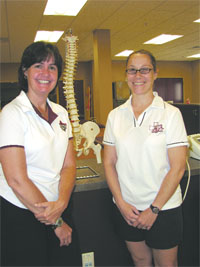


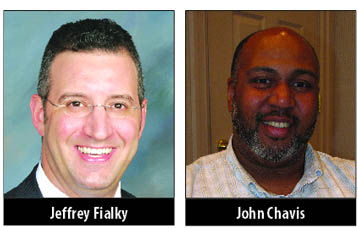
 Sean Wandrei is a tax manager with Meyers Brothers Kalicka, P.C.. His technical concentrations are in multi-state taxation as well as real estate entities; (413) 536-8510.
Sean Wandrei is a tax manager with Meyers Brothers Kalicka, P.C.. His technical concentrations are in multi-state taxation as well as real estate entities; (413) 536-8510.


